War. Diplomacy. Royal backstabbing. A Russian Empress who loved art and beauty. All that went into the making of the world’s most expensive dinnerware, Flora Danica by Royal Copenhagen.
Our story begins with Catherine the Great of Russia. In 1788, she was at the height of her power and prestige, having come to power 26 years earlier by deposing her husband in a coup. The formerly impoverished German princess was now the absolute ruler of the largest empire in the world, and she followed up one stunning achievement with another: Expanded Russia into the Black Sea and Crimea. Made Russia a major European power. Annexed Alaska. Reformed the government. Ushered in the Enlightenment. Check, check, check.

Catherine awed her contemporaries. Voltaire compared her to the Biblical Queen Semiramis of Babylon. Madame Vigée Le Brun, former court painter to Queen Marie Antoinette and no stranger to royalty, wrote that “…with her head held high, her eagle-like stare and a countenance accustomed to command, all this gave her such an air of majesty that to me she might have been Queen of the World…”
She was also the ideal Enlightenment ruler: Patron of the arts. Friend of the leading philosophers and thinkers. Champion of knowledge and learning, for women as well as men. The magnificent collections of St. Petersburg’s Hermitage Museum, a must see on any tour of Russia, actually began as her personal art collection.

In 1788, Catherine the Great was at war with the Ottoman Turks a second time. Her cousin, King Gustav III of Sweden, decided to take advantage of the situation and attack Russia in the back. To deter him, Russia had signed a treaty with Denmark 15 years earlier. But when the war started, the Danes didn’t move. They had problems of their own: their King Christian VII was insane, his wife Queen Caroline Matilda had an affair, her lover Doctor Johann Friedrich Streunsee fathered one of her children, the King’s mother ordered him executed and the Queen banished, then had herself and the King’s elder son rule as regent. But we digress.
The Russians demanded that the Danes honor their obligations. When the Danes finally showed up, they came up with a smaller force than originally promised. A few months later, when the war ended, the Danes felt mightily embarrassed. It was also not a good idea to get Catherine the Great and Russia on your bad side. But how do you make amends with the absolute ruler of the world’s greatest empire?
They must’ve thought long and hard about this one and figured out three things:
First, Catherine was a well-known lover of the arts. She bought thousands of paintings from all the major European artists of the day. She also commissioned porcelain, metalwork, glasswork, and books, and she even wrote comedies, fiction, and memoirs herself.
Second, she was also a known patron of the French Encyclopedists, a group of philosophers including Voltaire, Diderot, and d’Alembert who set out to gather all the world’s knowledge into one grand Encyclopedie so that it could be available universally.
Finally, and this was key: They knew that the Russians had been after fine porcelain for over 70 years. True hard paste porcelain was very precious in 18th century Europe. Much whiter and stronger than stoneware, it was exclusively used by the royalty and aristocracy, and all the major royal families of Europe had set up their own porcelain factories in towns like Sevres, Limoges, and Meissen. Catherine the Great loved porcelain so much, she turned the Russian porcelain factory in St. Petersburg into the “Imperial Porcelain Manufactory” and placed massive orders for her and her family’s private use.
And so the Danes came up with an idea: Let’s create the world’s finest collection of porcelain which is also an encyclopedia of art. But it had to be so amazing that Catherine the Great would (hopefully) forgive their failure to help Russia during the war. They trusted the task to the Danish royal porcelain factory, Royal Copenhagen, and its chief artist Johann Christoph Bayer:
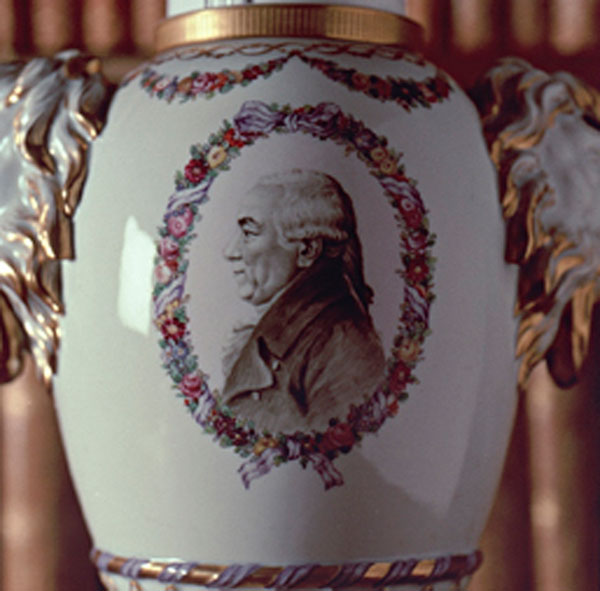
They commissioned a dinnerware collection of 1,802 pieces. They used the finest porcelain they could manufacture and then rimmed them in gold in a lace-like detail — just to be sure it was nice enough. Other pieces featured delicate flower buds that were carved out by hand:

Then, 3,000 flora and fauna from the Flora Danica botanical encyclopedia of 1761 would be individually hand-painted on the dinnerware pieces:
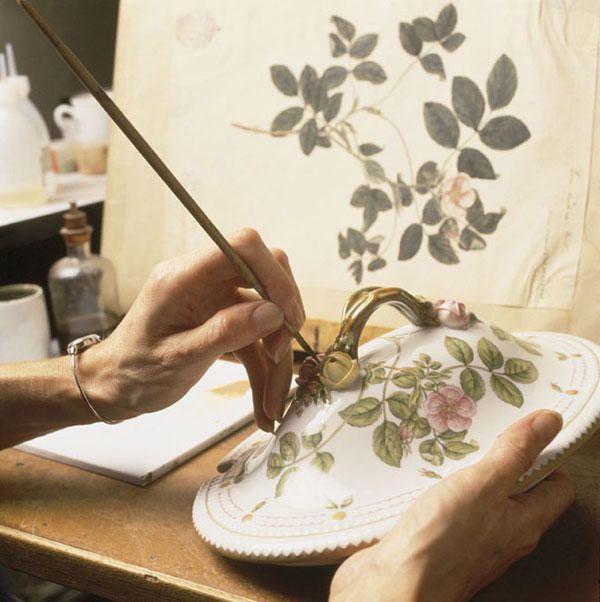
With this much decoration, the porcelain pieces are “overglazed,” which means they are decorated after being glaze-fired in the brightening kiln to produce the wide range of colors and the richness of detail. Then they are fired once more at about 850°C or 1,562 °F after they are painted, to allow the paints to melt and fuse with the fired glaze. Immediately after firing the gold decorations look matte and dull. Their characteristic gold sheen appears only after vigorous polishing with glass brushes or sand:

The result was something so magnificent, they could be used for state banquets or just displayed as works of art in Catherine’s great palace in St. Petersburg:
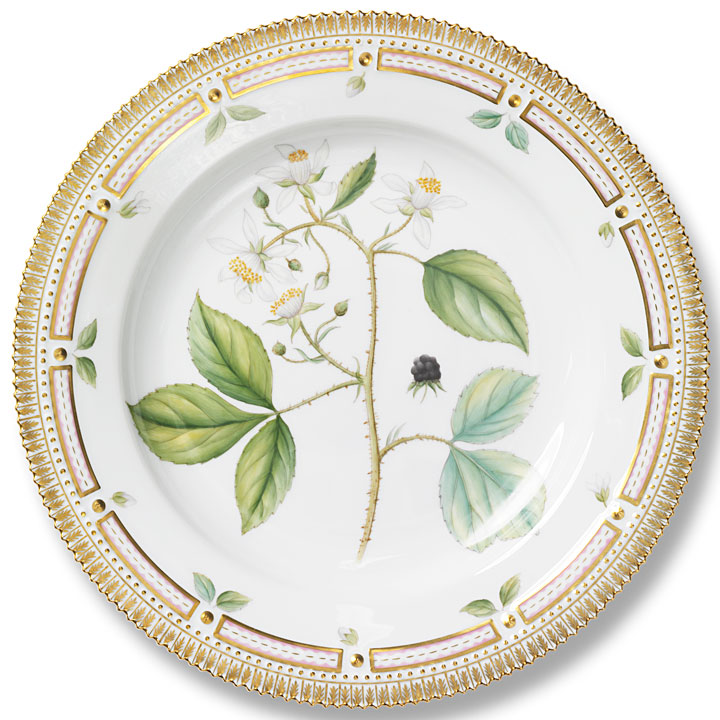

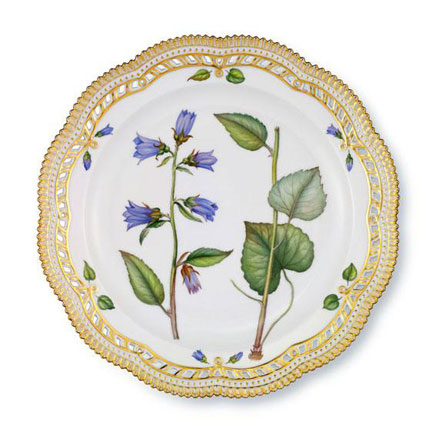

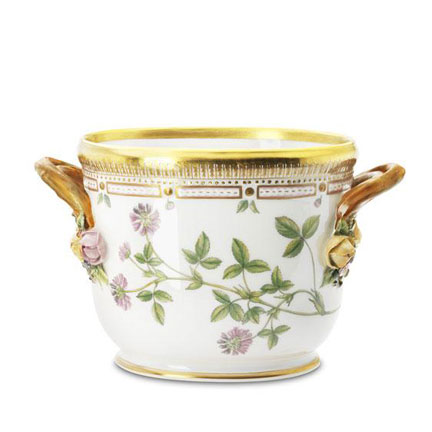
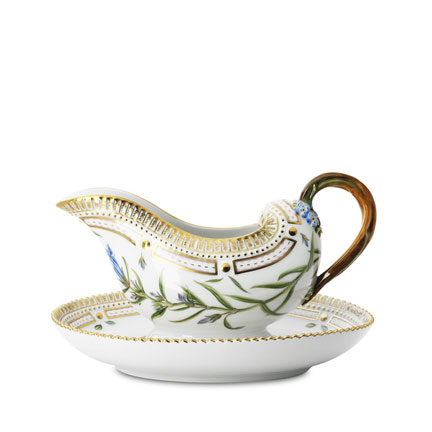
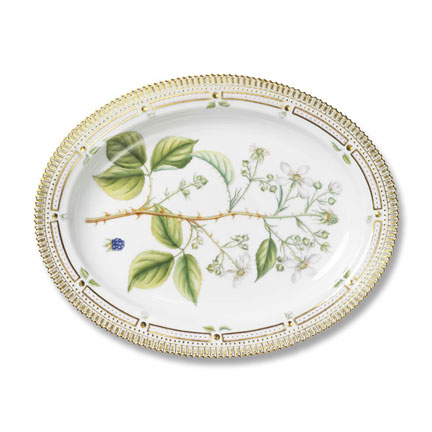
This multi-year project was probably intended as a gift for the 40th anniversary of Catherine the Great’s reign in 1802. But in 1796, Catherine suddenly died of a stroke. Her death caused chaos in Europe. Her son and successor, Paul, hated her and wanted to undo everything she started. He even dug up the remains of her dead husband, Peter III, for an elaborate state funeral before burying him with her — condemning her to spend eternity with the man she deposed and killed.
The Danes got the hint. They weren’t giving Paul the fine porcelain intended for his mother — he might’ve just smashed it to spite her! But they must’ve been so pleased with how this collection was coming along, their regent Prince Frederick VI, ruling Denmark in his father’s name, continued its production and even ordered some more, expanding it to 100 place settings.
In 1802, the production was finally finished. By now Paul was also gone: the Russians finally decided he was too crazy and poisoned him, replacing him with his 24-year-old son Alexander I (of War and Peace fame.) But the Danes weren’t giving him their prized porcelain. The first Flora Danica dinnerware service was delivered to the Danish Royal Palace, where Frederick VI used it to celebrate the birthday of his father King Christian VII in 1803, probably at their splendid Rococo-style Amalienborg Palace in Copenhagen:

It must’ve been a very nice thing to do for his father, who suffered schizophrenia, was forced by his mother to divorce his tragically adulterous Queen, and had been sidelined for over 30 years already. And Flora Danica continues to be used by the Danish Royal Family for special occasions to this day.
Today, Flora Danica is regarded as one of the most original and inspired examples of from the golden age of porcelain. It has also been collected by today’s royalty: Oprah, Princess Marie-Chantal of Greece, and various members of the Kennedy family. Royal Copenhagen continues to make it by special order from its factory in Denmark — the last porcelain dinnerware made in Denmark, and you can order or register for Flora Danica here.
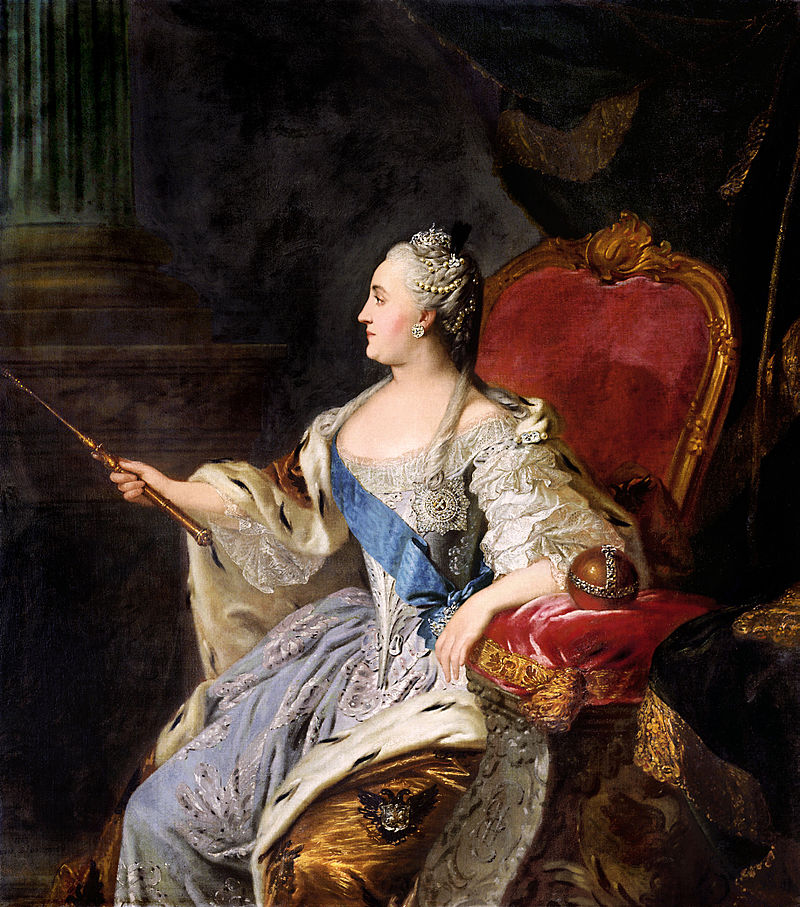
Comments
9 responses to “Flora Danica: The Amazing Story of the World’s Most Expensive Dinnerware”
Wonderful blog post and history lesson! Flora Danica has always my favorite pattern, and I dream of owning it someday. Thank you for sharing!
Thank you for your comments! It really is an amazingly beautiful pattern with an amazing story.
I have pieces of this elegant pattern. This article is most interesting. I thought the King of Denmark had the china commissioned for Catherine the Great as a wedding gift as they were engaged. She died before their wedding and as the article states it is used by the Royal family. Sometimes using the china for State dinners. Either way I love everything about Catherine the Great. I fell in love with this pattern after seeing it used in a magazine and searched for two years to find out what pattern it was. I searched from New Orleans to New York. On a trip to St. Thomas I walked into a fine jewelry store and there it was. My knees went a bit weak. And I love my china.
I’m not royalty however, my great nephews do call me Queen Cathy. I appreciate fine quality and collect Crystal, china and porcelains.
Thank you for sharing! I’m glad you liked our post 🙂
Thank you for your informative post! I gained an interest in Flora Danica when I inherited another set of hand painted Royal Copenhagen of a different line. I recently took a new position working for an estate that has one of the largest collections of Flora Danica in the world (I believe 90+ place settings and tons of serving pieces). Needless to say I am beyond excited to take a peek at all the pieces in time! And to flesh out the story to share with my coworkers who know the value, but not the story, of F.D.!
That’s great! What an amazing job you must have. Congratulations!
The section about Emperor Paul switching sides to support Frederick the Great after Catherine’s death is incorrect. Frederick the great died in 1786 which was 10 years before Catherine’s death and Paul’s accession. It was Emperor Peter III (murdered husband of Catherine) who sided with Fred the Great when he inherited the Russian throne in 1762
Thank you for pointing this out! Nice to meet another history buff 🙂
Wud love a piece of this